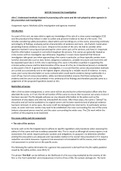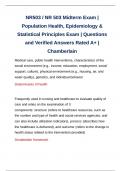Other
Unit 10 Aim C - Understand methods involved in processing a fire scene and the role played by agencies in fire prevention and investigation
- Institution
- PEARSON (PEARSON)
DISTINCTION awarded assignment. Includes case studies, evaluation and referencing. Part of unit 10 - FORENSIC FIRE INVESTIGATION
[Show more]












